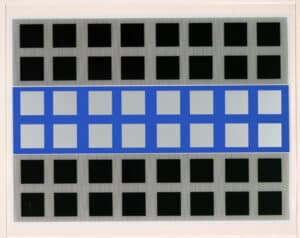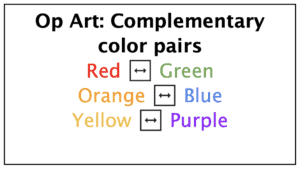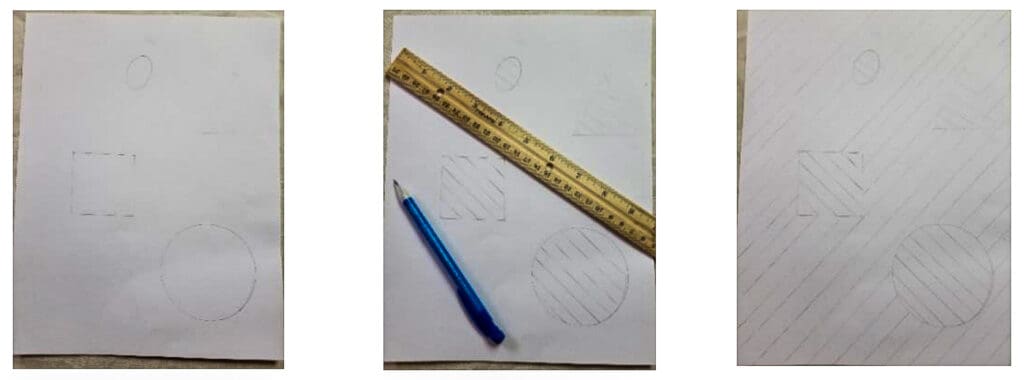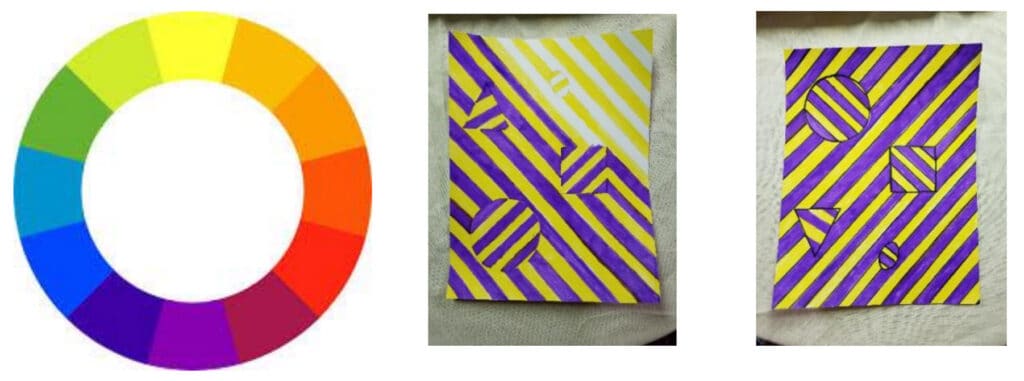Create your own optical art with lines, shapes, and complementary colors.

Jesús Rafael Soto (Venezuelan, 1923-2005) Screen Print D from Jai-Alai, 1969, Screenprint on Plexiglass. Gift of James W. Dye, 1979. (1979.56.1)
Jesús Rafael Soto explores shape and color theory to create artworks that play with our eyes and our mind. Optical art, or Op Art, is a form of abstract art that uses optical illusions. These illusions use shape, color, and line to create the illusion of movement, flashing, or warping.
In this artwork, Screen Print D from JaiAlai, Jesús Rafael Soto uses color, contrast, and geometric shapes to create Op Art. The use of contrast and color in Op Art uses science to create new and interesting effects. Can you spot any of these effects in Jesús Rafael Soto’s artwork?
Complementary colors are colors that are opposite on the color wheel. When colors that complement each other are placed next to each other, it can cause our minds to create movement or new colors and shapes.
 Supplies Needed:
Supplies Needed:
- Paper
- Pencil
- Ruler
- Markers, Colored Pencil, or Crayons
- Sharpie or Black Marker (Optional)
- Shape Tracers (Optional)
Steps to Make Your Op Art:
- Freehand or use shape tracers to create 2-5 geometric shapes on your paper. Try any shape you would like–triangles, squares, circles, pentagons, and more.
- Use a ruler to draw evenly spaced lines inside of your shapes with a pencil whichever direction you want.
- Use a ruler to draw evenly spaced lines outside your shapes, going the opposite direction of the lines inside of your shapes.

- Use the color wheel to pick two complementary (opposite) colors. Contrasting colors are opposite on the color wheel. Using your contrasting colors, fill in your drawn lines. Switch colors with every line you fill in.
- Optional: Use a sharpie or black marker to trace your pencil lines.

Watch a Video Tutorial on Creating Op Art:
Share Your Art on Social Media!
Tag @atownartmuseum & #AAMatHome.

